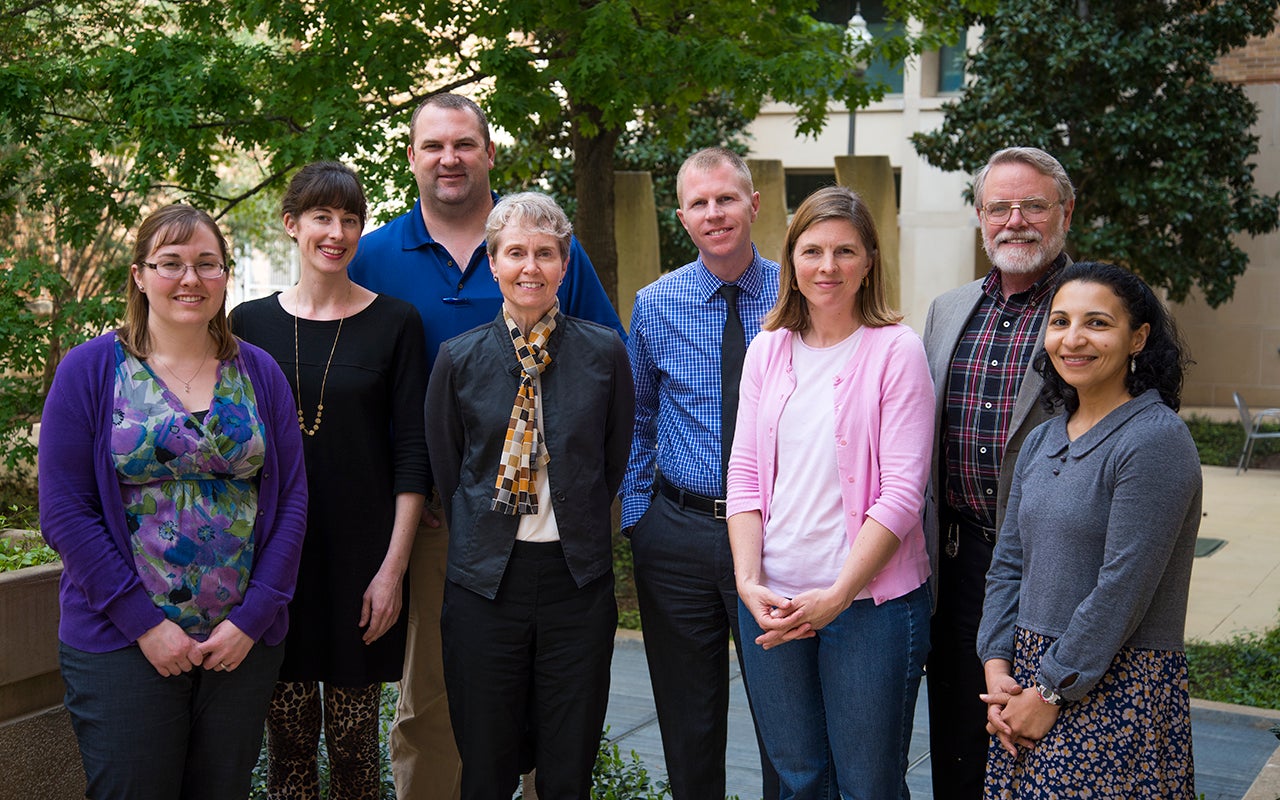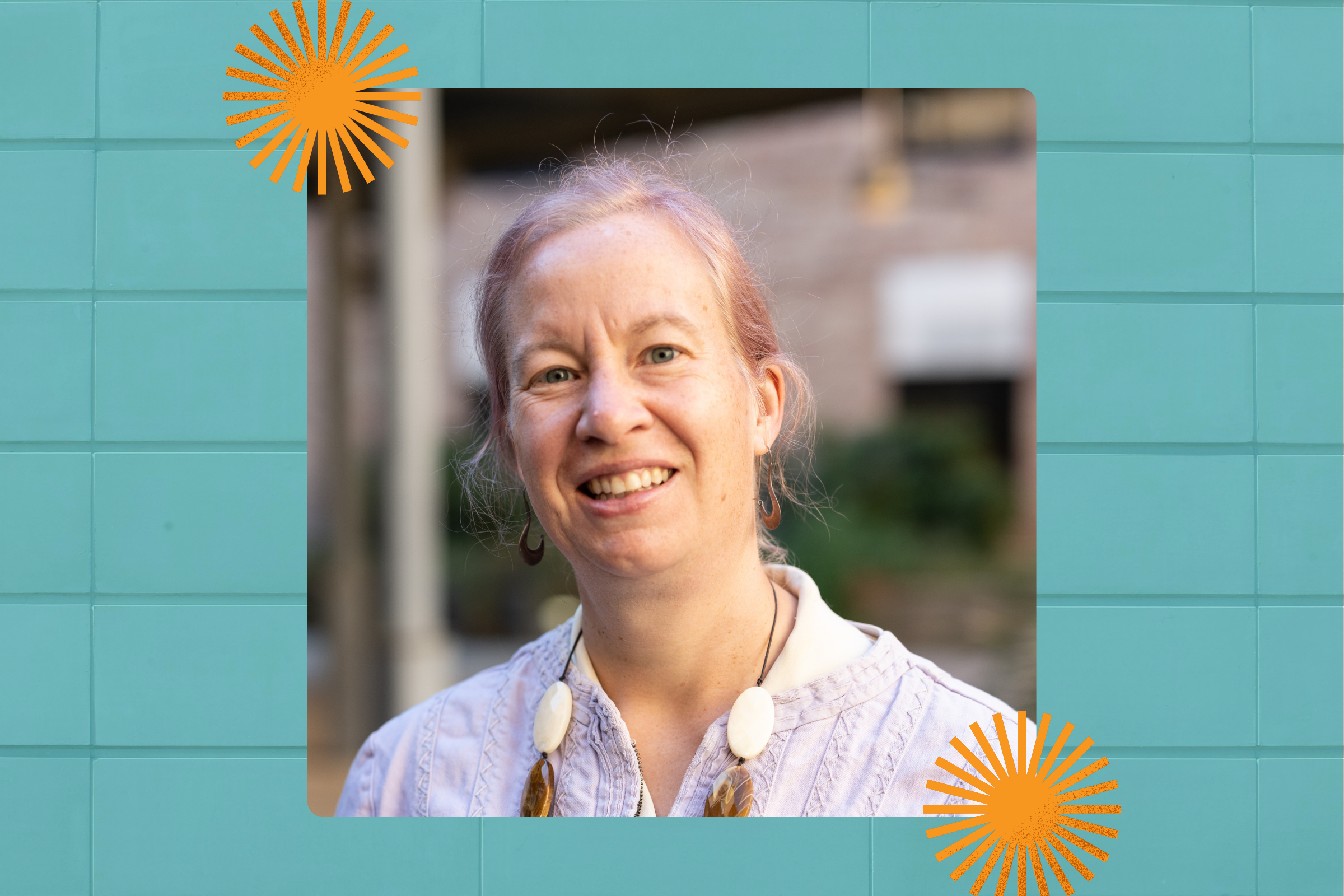Freshman Research Starts at UT, Changes the World
Exposing first-year college students to real research experiences alongside faculty scientists is something The University of Texas at Austin has been doing for a decade now through the Freshman Research Initiative.

Stacia Rodenbusch of UT Austin discusses the FRI program at a meeting.
Exposing first-year college students to real research experiences alongside faculty scientists is something The University of Texas at Austin has been doing for a decade now through the Freshman Research Initiative.
The FRI’s proven positive results have caught the attention of other institutions around Texas and the country, with several universities now replicating the program on their own campuses. Representatives of some of these programs were on the UT Austin campus last week to compare notes and share insights. Here we share highlights from FRI-like efforts on and beyond the forty acres.
FRI at The University of Texas at Austin
Launched in 2005, UT Austin’s remains the nation’s largest research program for freshmen nationwide. Around 800 freshmen participate each year, with half of the students being women and half coming from economically disadvantaged and/or underrepresented minority groups.
After a semester of learning basic research techniques, first-year students spend a year working alongside a faculty scientist and graduate student researchers in a lab. Just like the more senior scientists, they conduct original, potentially publishable research, seeking answers to questions science has not yet answered. Currently, over 26 unique research streams cover topics from exploring potential biofuels, to programming autonomous robots, to learning how to create nanomaterials, and more.
Thousands of freshmen have participated in FRI in the past ten years, experiencing a range of benefits. FRI students are 35 percent more likely to graduate in four years, and twice as likely to graduate with a degree in science or math compared to non-participants. They earn higher GPAs, and are about three times more likely to pursue an advanced degree.
Many universities attempting to develop better strategies to retain students in the sciences, especially those from traditionally underrepresented groups, have taken notice of FRI and are working to replicate its successes.
First-Year Innovation & Research Experience (FIRE), University of Maryland
FIRE at the University of Maryland owes much of its pedigree to UT Austin. The program is run by Dr. Patrick Killion, a UT alumnus who served as a research educator in FRI for three years before moving to a faculty position at Delaware Valley University. Killion was recruited by the Provost and Senior Vice President of the University of Maryland, Dr. Mary Ann Rankin, who also is the former Dean of the College of Natural Sciences.
FIRE is still in the early stages, having launched last fall with eight streams that serve more than two hundred students. While Killion modeled FIRE after his alma mater’s program, the goals are a bit different. Where FRI is targeting students in the sciences, FIRE has a broader focus and will include research streams in the social sciences and the arts and humanities.
Current research stream topics at Maryland include antibiotic resistance, the science of addiction, and even one working on the genome of the Terrapin, which is the state reptile and U of M’s mascot.
The goal of the program is similar to that of FRI: to get students involved in authentic faculty-led research and prepare them for their futures through accelerated professional development..
“The program is not just about getting students involved in research,” said Killion, “but getting them involved in work that makes their academic lives and their future professions more immediately relevant.”
Program to Educate and Retain Students in STEM Tracks (PERSIST), UT El Paso
PERSIST at the University of Texas at El Paso had its origin in 2010 with a project out of the Howard Hughes Medical Institute’s Science Education Alliance called Phage Hunters Advancing Genomics and Evolutionary Science, or PHAGES. The PHAGES laboratory, like FRI, puts freshmen to work researching but students are all part of a national program conducting similar research into the genomics of bacteriophages.
Dr. Stephen Aley, head of PERSIST, found that PHAGES worked well, but he had goals of expanding research opportunities for first-year students. The FRI’s approach of bringing a variety of scientists into a larger effort to involve freshmen in research and allowing faculty’s personal passion for their own research to drive the content held a lot of promise, so that became the model for expansion.
UTEP’s demographics differ from UT Austin’s, with about 80% of all students on the El Paso campus being Hispanic. Aley sought to bring in any and all students who want to participate in PERSIST.
The program, in its first year, has three research streams serving around 75 students. PERSIST plans on adding two sections next year and another two or three the following year. Aley notes that the plan is to continue "until we get to a point where we’re saturating the market."
Freshman Research Immersion, Binghamton University
Binghamton University’s Freshman Research Immersion program was initiated in the Provost’s Office. The Immersion program also targets STEM students and is funded by various sources, including grants from the Howard Hughes Medical Institute and the New York State Regional Economic Development Council.
The program is in its first year, with three research streams serving around 90 students. The campus plans to add two or three streams a year until administrators reach their goal of ten streams within the next five years.
While the Immersion program is modeled after FRI, it has a major difference. Where FRI streams tend to be grounded in one area of academia, say chemistry or computer science, Immersion streams are designed to be collaborative and interdisciplinary, across multiple areas of science.
“We wanted to emphasize interdisciplinary research so we chose faculty groups that were already working together in interdisciplinary ways,” said Dr. Nancy Stamp, Director of the program.
Achieving Success through Undergraduate Research and Engagement (ASSURE), UT Arlington
Ashley Purgason, assistant vice president for strategic initiatives at UT Arlington, learned about the FRI online and began working with a team of colleagues to gather information from those who had been in the trenches with the FRI at UT Austin and FIRE at the University of Maryland.
ASSURE launched in 2014: its first full cohort of 24 freshmen researchers have recently begun working in interdisciplinary labs with lead scientists from two departments. ASSURE uses a reverse-modified-scaffold sequence for its courses, meaning students get considerable guidance in conducting original research their first semester and then develop their own testable research questions by the third semester.
Purgason says UT Arlington plans to eventually expand the model across the University.

Representatives from across the US met on the UT Austin campus recently to compare FRI-like efforts at their institutions. From left to right are: Megan Fegley (Binghamton University), Staci Rodenbusch (UT Austin), Kevin Schug (UT Arlington), Nancy Stamp (Binghamton University), Patrick Killion (University of Maryland), Erin Dolan (UT Austin), Stephen Aley (UT El Paso), and Eman Ghanem (UT Austin).



